Growing Chionodoxa ‘Glory Of The Snow’ – A Perennial Bulb Prized For Its Early Flowers
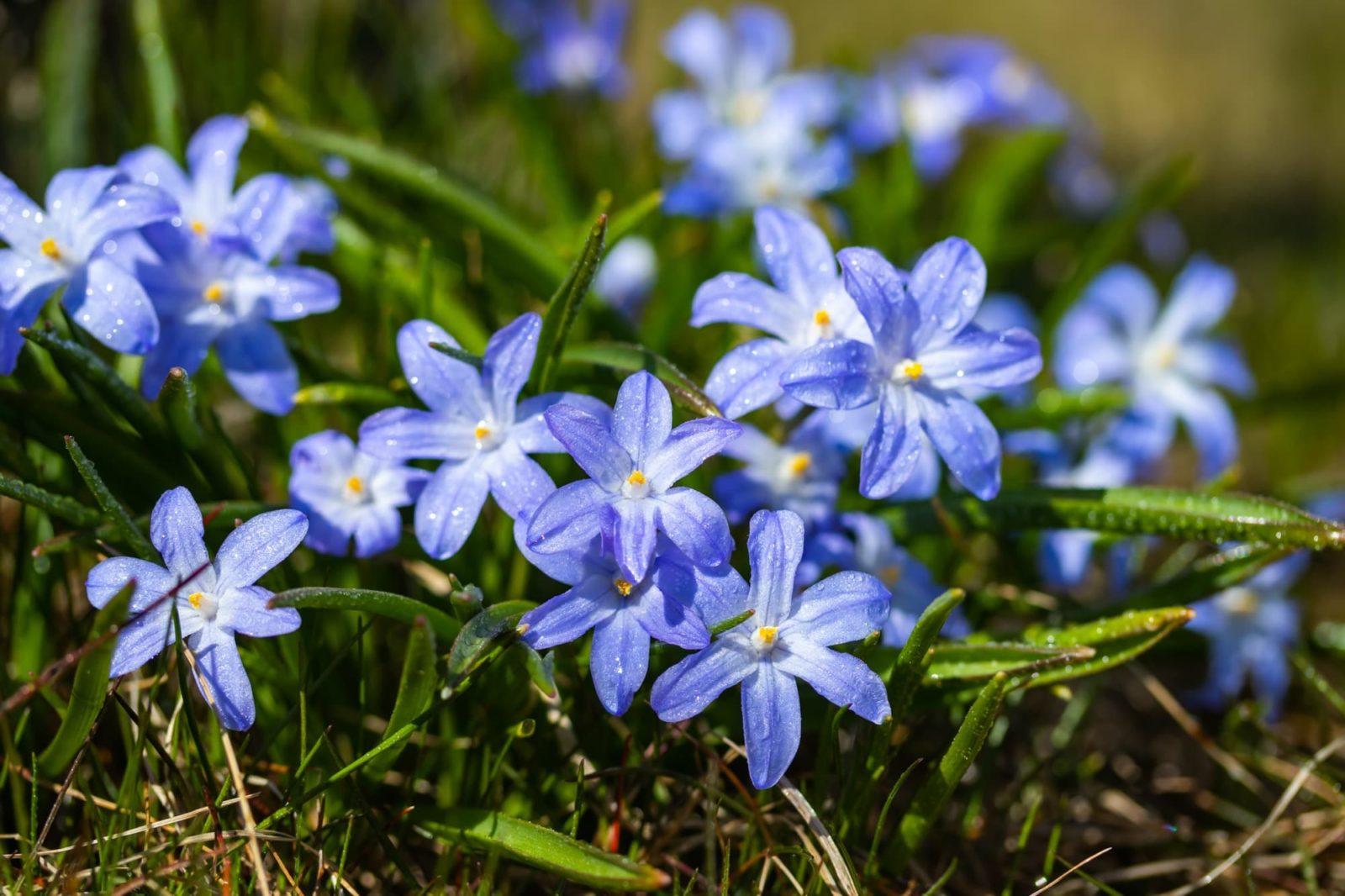
BULBS > CHIONODOXA

Elizabeth is a Permaculture Garden Designer, Sustainability Consultant and Professional Writer, working as an advocate for positive change. She graduated from the University of St. Andrews with an MA in English and Philosophy and obtained a Diploma in Applied Permaculture Design from the Permaculture Association.
Reviewed By DAN ORI

Dan has over 27 years’ under his belt caring for plants and gardens. Working as a Horticultural Instructor and Consultant, he draws on a diverse range of experience that includes working as a Head Gardener, Tree Surgeon, Garden Centre Trouble Shooter, and writer of academic papers. Dan has a Level 3 Diploma in Horticulture and is currently a candidate for the RHS’s most prestigious award – The Master of Horticulture.
IN THIS GUIDE
CHIONODOXA GUIDES
Chionodoxa, now technically classified as Scilla, is a perennial bulb which is prized as an early flowerer.
Also known as ‘Glory of the Snow’, these plants are one of the earliest bulbs to flower in late winter and early spring.
Chionodoxa is a former genus that provides a number of different early-flowering bulbs.
Overview
| Botanical Name | Chionodoxa / Scilla |
| Common Name(s) | Glory of the Snow |
| Plant Type | Perennial Bulb |
| Native Area | Eastern Europe & the Mediterranean |
| Hardiness Rating | H6 |
| Foliage | Deciduous |
| Flowers | Often blue or purple racemes of star-shaped, flat or bell-shaped flowers |
| When To Plant | September to October |
Sunlight
Preferred
Full sun or part shade
Exposure
Exposed or sheltered
Size
Height
0.1 – 0.5M
Spread
0 – 0.1M
Bloom Time
February to March
Soil
Preferred
Most fertile soils
Moisture
Well-drained
pH
Any
Native to the mountainsides of Turkey, they flower at high elevations.1Chionodoxa forbesii (Forbes’ glory-of-the-snow). (n.d.). Native Plant Trust. Retrieved September 11, 2023, from https://gobotany.nativeplanttrust.org/species/chionodoxa/forbesii/
Previously categorised as a genus, Chionodoxa is now considered to belong within the Scilla genus as a section, though there is still some disagreement about naming these plants.2Trávníček, B., Duchoslav, M., Šarhanová, P., & Šafářová, L. (2009, December 24). Squills (Scilla s.lat., Hyacinthaceae) in the flora of the Czech Republic, with taxonomical notes. ResearchGate. Retrieved July 21, 2023, from https://www.researchgate.net/publication/242314535_Squills_Scilla_slat_Hyacinthaceae_in_the_flora_of_the_Czech_Republic_with_taxonomical_notes_on_Central-European_squill_populations
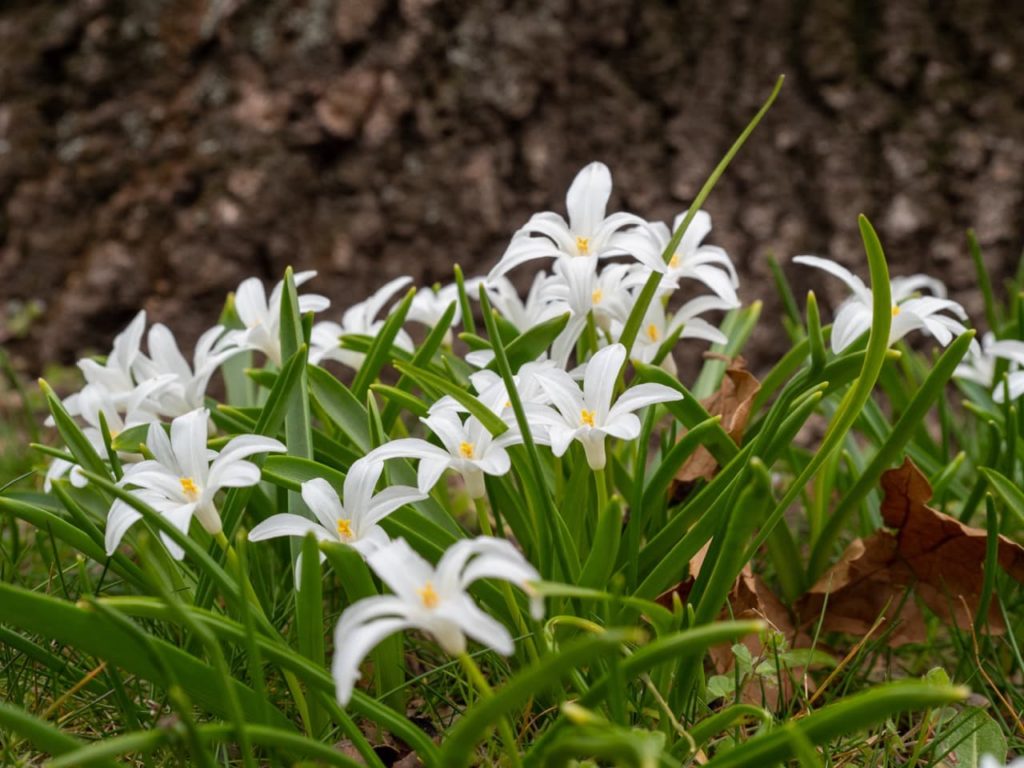
Regardless of their names, they are prized in the UK and elsewhere outside their native range as garden plants, particularly for naturalistic drifts under trees or in grass in a lawn, where, when planted in larger quantities, they can have a dazzling effect.
These plants bloom when there are few other blooms around, in the late winter or very early spring, usually around February or March.
As spring ephemerals, they are useful for early pollinators and also, since they die back after flowering, they can help catch and store resources in a garden as part of a useful ground cover.
Common Varieties
Some varieties of Chionodoxa to consider are:
Scilla forbesii
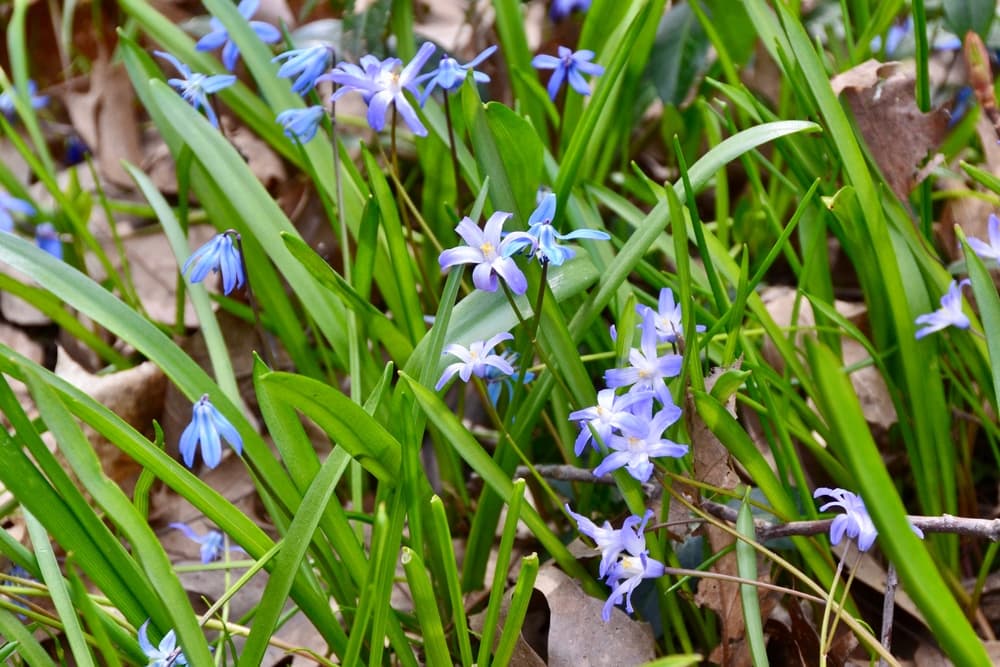
Scilla luciliae
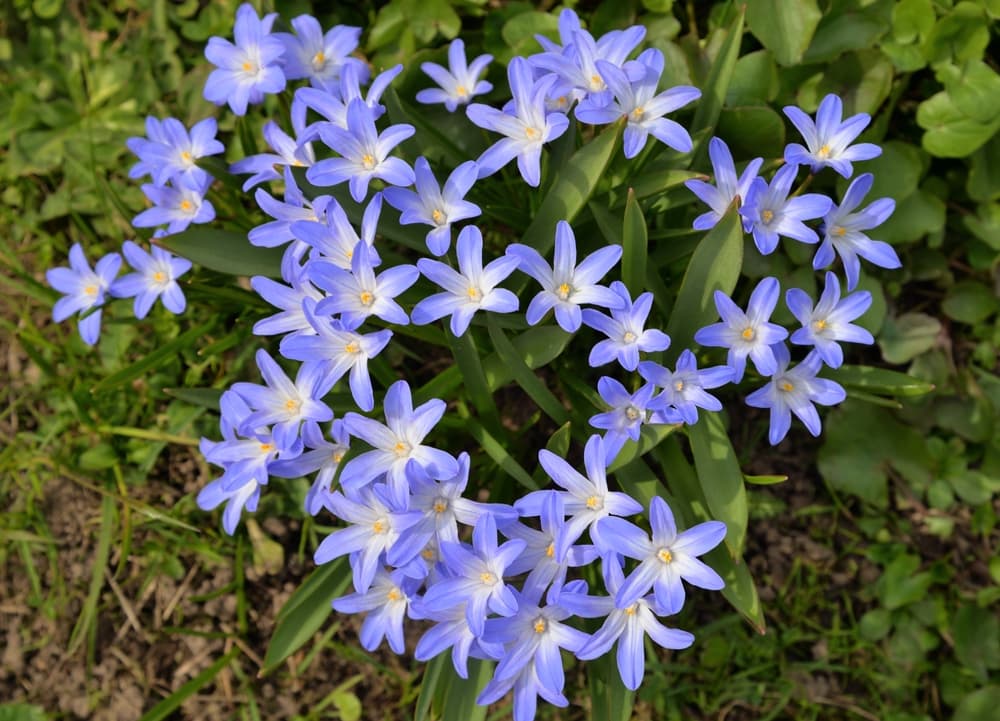
Scilla sardensis
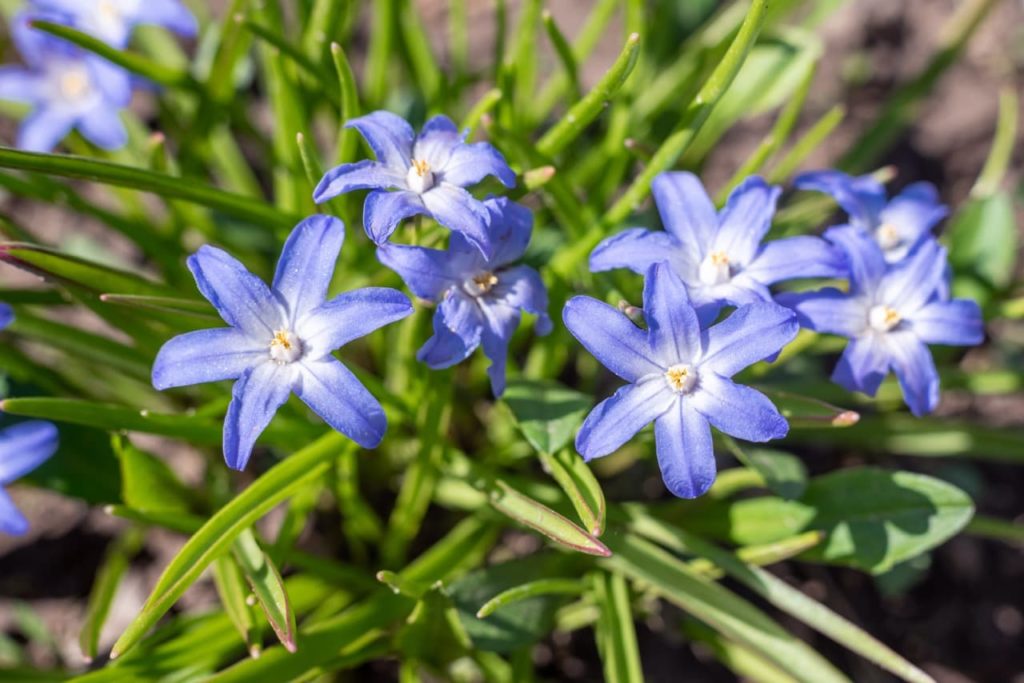
These three are the most commonly grown, among some 6 species within this section.
The others are S. cretica, S. lochiae and S. nana.
How To Grow Chionodoxa
These bulbs are easy to grow, but like most plants, it is important to ensure that you place them in the right location to ensure they thrive.
Preferred Aspect
These bulbs will do best in full sun but can also cope with some light shade.
They are fine with any aspect as long as they are not in a location with deeper shade.
However, they can be placed below deciduous trees and shrubs as they bloom before they get their leaves.
Soil Requirements
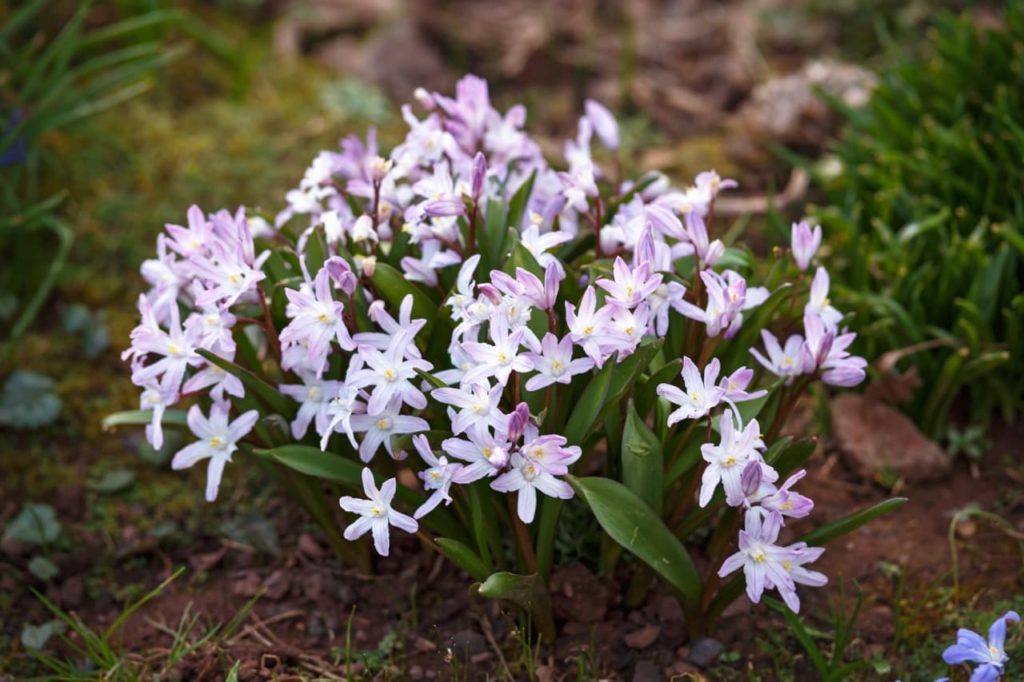
These bulbs are not particularly fussy about soil type or pH, but they do need free-draining conditions and cannot cope with waterlogged soil or growing medium.
Where & How To Plant
When choosing where to plant these bulbs, you should not only consider the light and soil requirements, but should also think carefully about the benefits these early-flowering bulbs could bring within the garden design as a whole.
Chionodoxa can be planted in a range of different locations.
They can be planted to naturalise in grass, in a gravel garden or rockery, towards the front of a border in a cottage garden, below roses or other deciduous shrubs, below deciduous trees or in containers, either on their own or in mixed container garden displays.
Wherever you choose to grow them, the bulbs should be planted in the autumn – in either September or October.
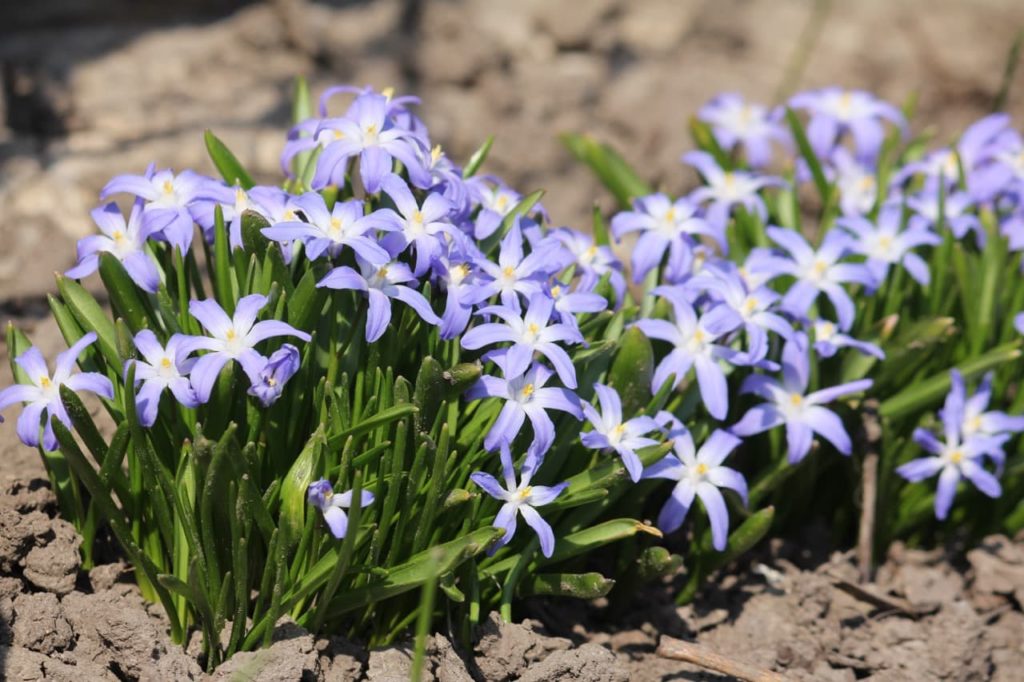
They should be planted around 5cm deep, with a spacing of 5-7.5cm or so, or with an aim to place around 15 bulbs per each 30cm square area.
These bulbs might be placed in a container on their own or alongside other plants.
For example, they might be considered for a bulb lasagne alongside other spring-flowering bulbs.
They can also look good in larger containers around the edges of other perennial plants or smaller shrubs in mixed winter and spring displays.
Chionodoxa Care
These bulbs can be a great choice for a relatively low-maintenance garden, though the care will depend on where you have chosen to grow them and plants in pots will typically require more care than those growing in the ground.
Watering
These bulbs are typically happy with natural rainfall when planted in the ground and too much water is more commonly an issue than too little.
Remember, good drainage is very important and to grow these bulbs successfully, you absolutely need to provide free-draining conditions.
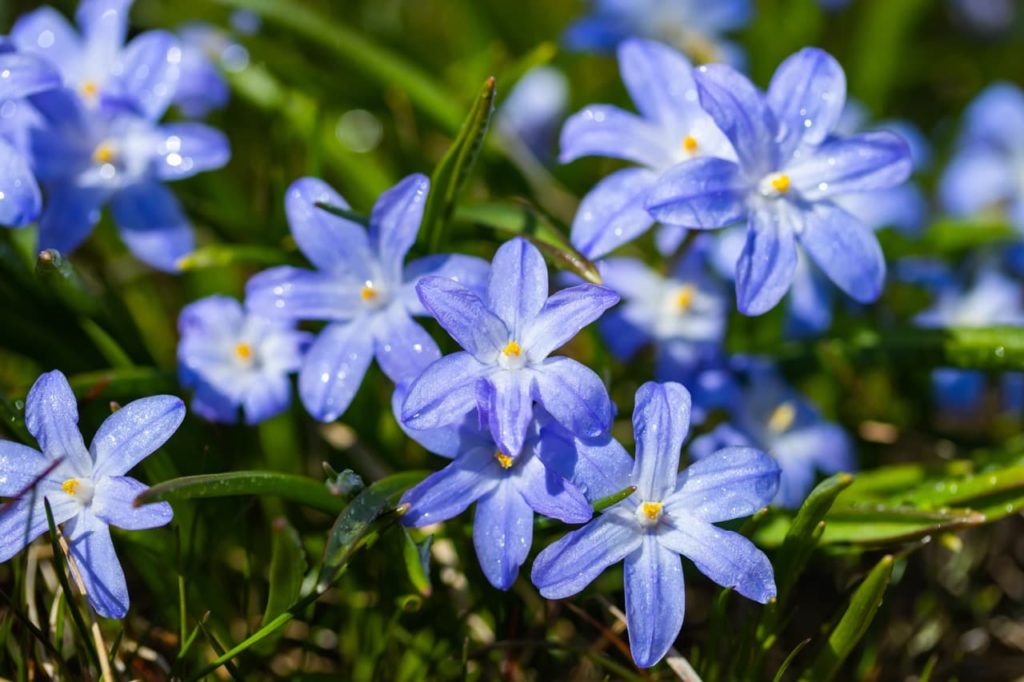
When growing in containers, bulbs will need more watering than when growing in the ground.
Water deeply during dry spells, but always make sure that water can drain away freely from the base of the container you have chosen.
Propagation
Mostly grown from bulbs, Chionodoxa can also be grown from seed or bulb offsets.
If you decide to take offsets from the bulbs, you will do so in summer and pot these on, but these will take several years before they flower.
Overwintering
Chionodoxa commonly grown in the UK is hardy in all of the UK and northern Europe, with an RHS hardiness rating of H6.
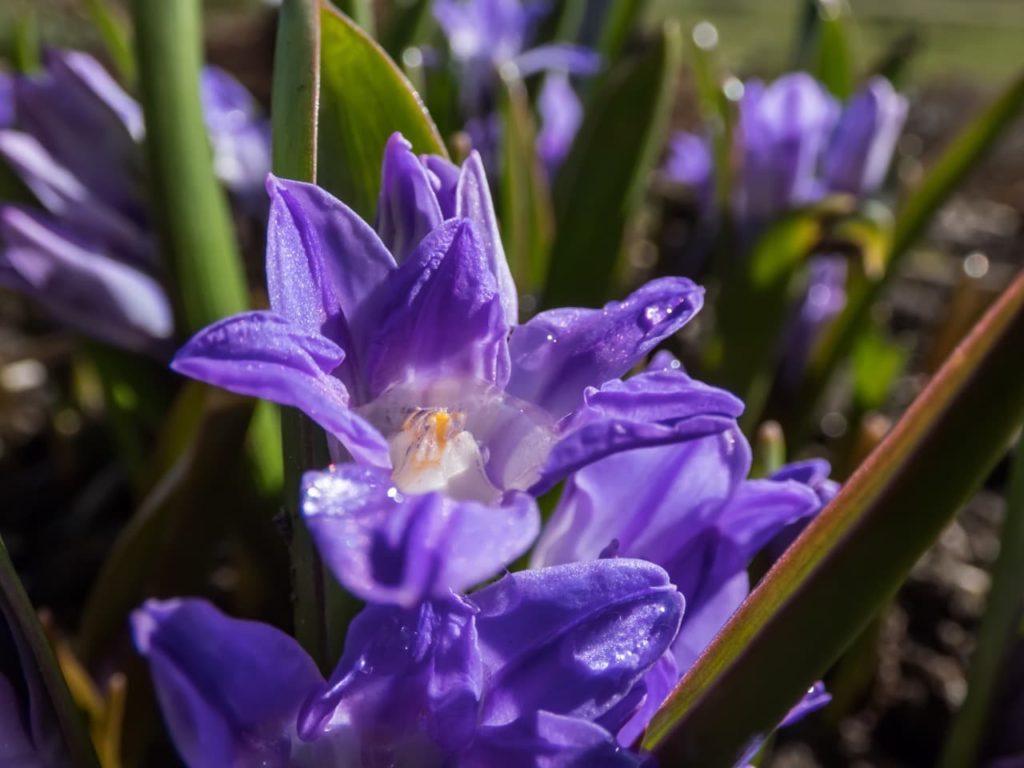
They can cope with temperatures down to -15°C.
Pruning
The only other care to think about is when if at all you should cut back your plants and the answer is that you should not cut back or mow plants growing in grass until the foliage dies back naturally.
This is important because it gives the plants the opportunity to store energy in their bulbs as they should and it also allows the plants to self-seed and naturalise within an area.
Gardening expert Dan Ori tells us it is normally safe to cut back leaves of Chionodoxa 6 weeks after flowering if they have not fully died back:
“However, you can cut down the flowering stems as soon as they are spent,” he adds.
Common Problems
These plants are typically pest- and disease-free, and most of the common issues experienced when growing them arise due to a problem with the environmental conditions.
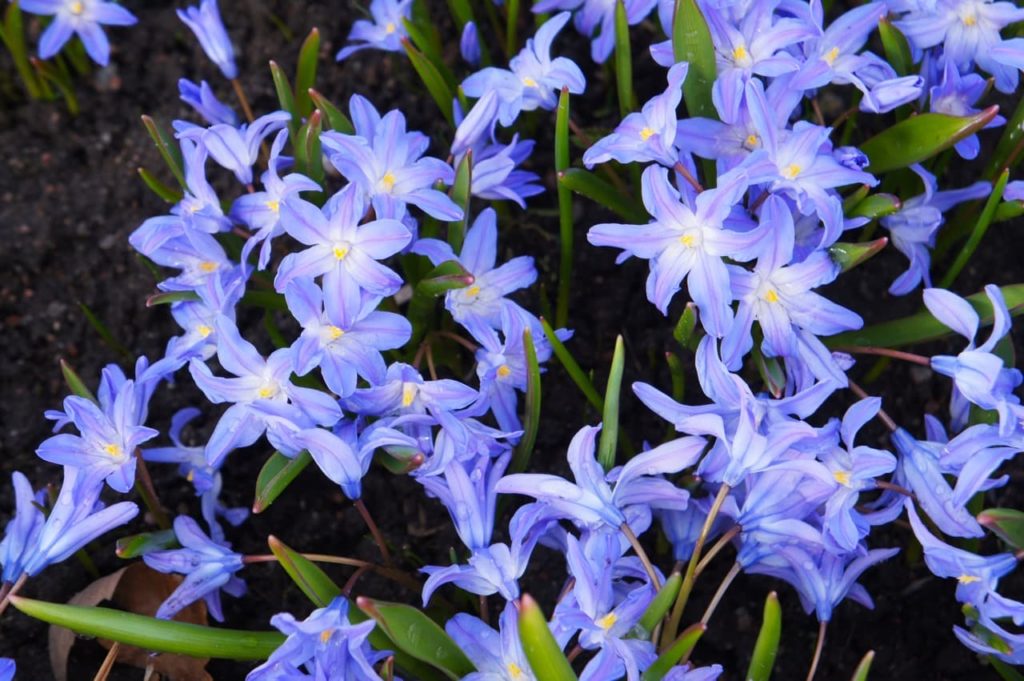
So, whether growing Chionodoxa in the ground or in containers, ensure adequate drainage and make sure that excess water can drain away freely.
References
- 1Chionodoxa forbesii (Forbes’ glory-of-the-snow). (n.d.). Native Plant Trust. Retrieved September 11, 2023, from https://gobotany.nativeplanttrust.org/species/chionodoxa/forbesii/
- 2Trávníček, B., Duchoslav, M., Šarhanová, P., & Šafářová, L. (2009, December 24). Squills (Scilla s.lat., Hyacinthaceae) in the flora of the Czech Republic, with taxonomical notes. ResearchGate. Retrieved July 21, 2023, from https://www.researchgate.net/publication/242314535_Squills_Scilla_slat_Hyacinthaceae_in_the_flora_of_the_Czech_Republic_with_taxonomical_notes_on_Central-European_squill_populations
